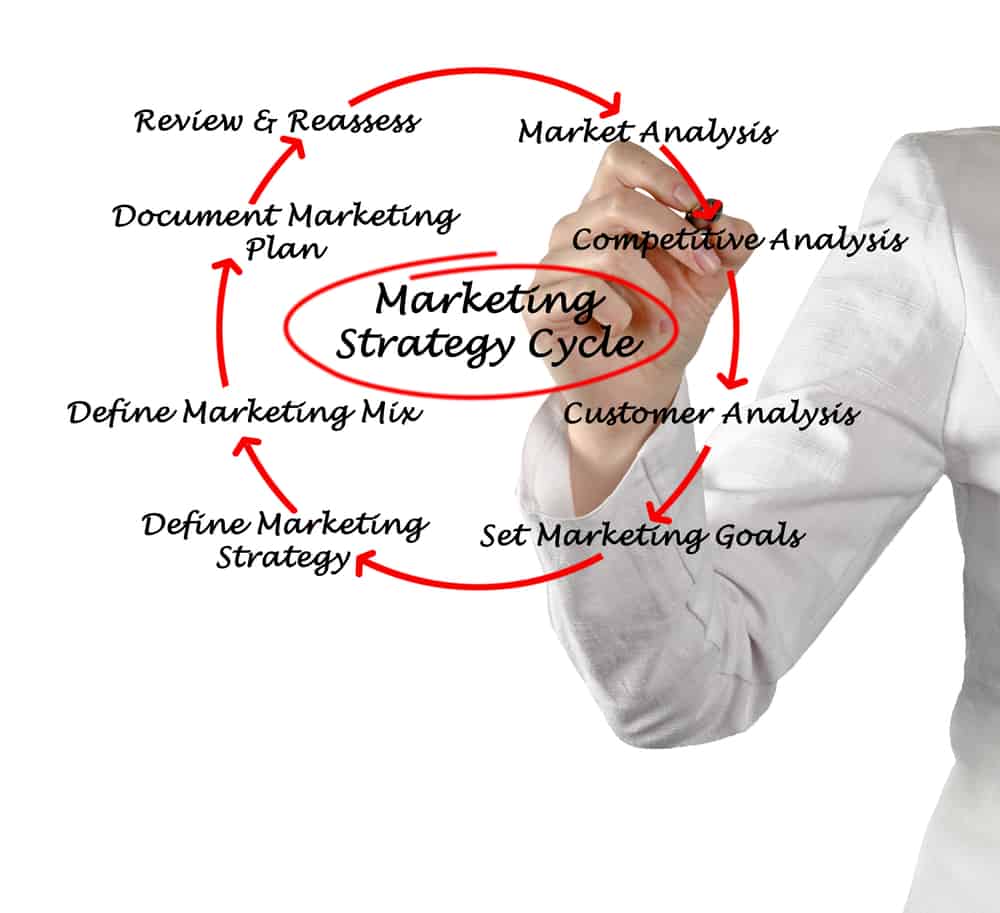6 Steps to Improve Your Company’s Competitor Analysis

Article Summary: Competitor analysis isn't as daunting as you might expect. Here are six things you can start doing right away to dive into what your competitors are doing and devise a strategy to come out on top. This simple six-point strategy will help you beat the competiton:
- Define your goals
- Determine what data you need to collect
- Identify your competion
- Collect your data
- Analyze your data
- Set up a periodic competitor analysis review process
Understanding what your competitors are doing is an important part of competing in the marketplace. Keep reading to learn more.
Doing competitor analysis effectively is essential to staying ahead in your market niche, but most companies aren’t sure how to do it. Nearly 3 in 4 marketers agree that competitive analysis is important or very important for business success. But 6 in 10 marketers say they’re not very good at doing competitor analysis. Only 4 in 10 marketers actually apply competitor analysis to their business strategy.
Learning how to improve your competitor analysis can give your company an edge on the majority of rivals who are struggling with mastering this tactic. Here are six steps to help you fortify your competitor analysis in 2018.
1. Define Your Goals
The first step when doing competitor analysis is to define your goals. What do you plan to do with the information you collect?
Are you trying to improve your branding versus your competition? Improve your USP? Get more traffic that your competition on a particular set of keywords? Generate more social followers, likes and shares? Make your user experience more satisfying than your competitors? Generate a higher conversion rate? Defining your goals will help you focus your competitor analysis and determine what you will do with it after you’re done.
2. Determine What Data You Need to Collect
Defining your goals will help you determine what type of data you need to collect, which is the next step in competitor analysis. There are many possible sources of data to draw from:
- Search engine data, such as keyword rankings, page authority rankings
- Online advertising and promotion, such as pay-per-click ads, videos, slideshows, webinars, podcasts, press releases and online articles
- Website content sources, such as FAQs, blog posts, ebooks and white papers
- Social sources, such as posts on Facebook, Twitter, Instagram, Snapchat and LinkedIn
- Print sources, such as brochures, flyers, newspaper ads and magazine ads
- Customer data gathered from your own customers or those of your competitors through interviews, surveys and polls
- Financial reports and company profiles, available from sources such as Dun & Bradstreet and Hoovers
- Stock market data
- Market research reports
- Newspaper archives
Your goals will help determine what type of data to collect and prioritize. For instance, if you’re trying to improve your video marketing in relation to that of your competition, collecting data on video content, SEO rankings of videos and social shares of videos will be a priority. It’s important to prioritize which type of content you need to collect in order to keep your competitor analysis manageable.
3. Identify Your Competition
In order to make your competitor analysis manageable, it’s also important to narrow down your list of competitors. When you’re doing business online, you may be competing with hundreds or thousands of competitors, so it’s not feasible to research every company in equal depth. Identifying your top ten competitors can give you a good basis for doing a competitive analysis, says IMPACT project manager Dan Tighe.
If you’re not sure who your top competitors are, one of the fastest ways to find out is to do a Google search on the type of product or service you sell and see which companies show up on top. Using a search analytics tool such as SEMrush can also help you quickly identify your top competitors. Market research reports and product review sites are other tools to help you identify your competition.

4. Collect Your Data
The next step is to collect the data you’ve prioritized on the companies you’ve identified as your competitors. The more you can automate your data collection process, the more efficiently this step will go.
While not all data collection can be automated, tools are readily available for automating online and social media data gathering. Platform-specific tools such as Google Analytics, Facebook Insights and Twitter Analytics allow you to automate data collection for specific search engines and social channels. Marketing software such as SEMrush, HubSpot, XOVI and RankWatch allow you to integrate data from multiple sources. Ultimately, you will want all your data integrated into a single database for analysis.
5. Analyze Your Data
After collecting your data, it’s time to analyze it. In order to analyze your data, you will need to define some key performance indicators that relate to your competitor analysis goals. For instance, if your goal is to generate more search engine traffic than your competitors, KPIs might include stats such as traffic volume, page authority and unique backlinks. For best results, define your KPIs before collecting your data.
Many marketing data collection tools such as Google Analytics and SEMrush include built-in analytics tools. You can also integrate your data into your own custom analytics dashboard displays by using self-service business analytics tools, such as Microsoft Power BI, IBM Watson Analytics and Zoho Reports.
6. Set up a Periodic Competitor Analysis Review Process
Once you’ve analyzed your data, you should be able to see from your KPIs what areas you need to improve to gain an edge on the competition. In order to make this sustainable, you should build a periodic review of your competitor analysis into your standard operating procedures.
A good way to do this is to create a checklist with a timetable scheduling when to do periodic review tasks. For instance, you might create a daily report on your company’s SEO performance versus your competitors, review this weekly in meetings with your marketing team, and use this to chart progress toward monthly goals and make minor tactical adjustments. Each quarter, you can then assess your monthly goals and see if you need to adjust them to stay on track with your annual goals. Finally, each year you can make a comprehensive review of your progress toward your marketing goals as well as your goals themselves and use this to redefine your quarterly and monthly goals for the next year.
Defining your goals, determining what data to collect, identifying your competition, collecting your data, analyzing your data and scheduling periodic reviews are six steps toward a winning competitor analysis strategy. Implementing these steps will help you stay on top of what the competition is doing so you can make the adjustments you need to stay ahead in your market.
Find the right funding for your business.
Term loans up to $250K. Lines of credit up to $100K.
No obligations and no hard credit pulls.




